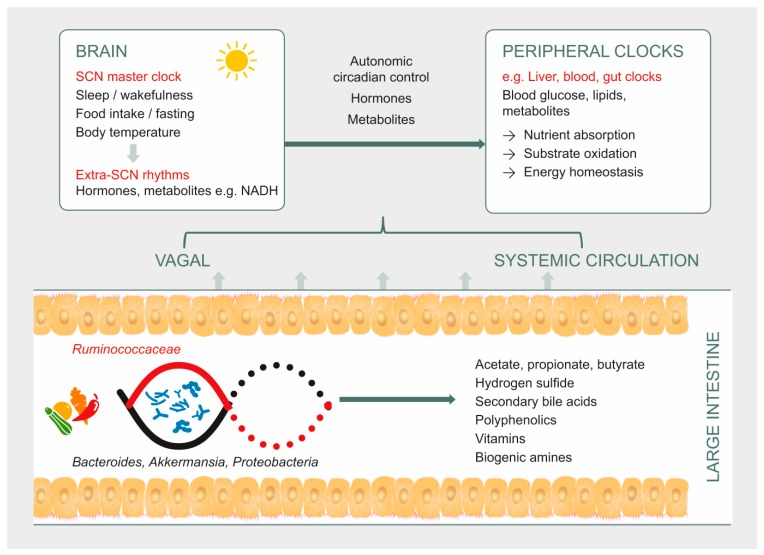Figure 2.
Potential mechanism of gut microbiota interactions in the circadian–metabolic axis. Host behavior, sleep, and diet control gut bacteria, which in turn show changes in terms of microbial composition and functional genome in a rhythmic manner. Circadian rhythms may be affected by microbial metabolites such as butyrate, secondary bile acids, and microbially synthesized vitamins, and potentially disrupted by hydrogen sulphide. The immediate effects on energy resources for colonic epithelial cells, and peripheral effects on substrate oxidation via systemic circulation potentially impact energy homeostasis.

